From glittering spiders webs to icy caves, the UK's natural landscape is filled with spectacular natural wonders in the winter months.
Discover Britain's most spectacular natural winter wonders in our photography gallery.
Snow, surf and spray
A spine of granite rises from a wave of turquoise. This is an extraordinary moment captured from the wonderfully named Mellon Udrigle Beach on a remote promontory in Wester Ross, looking north-east across Gruinard Bay to some of western Scotland’s finest peaks on the Coigach Peninsula. The most prominent peak is Ben Mor Coigach on the right of the picture, with Assynt in the distance.
Shadowlands
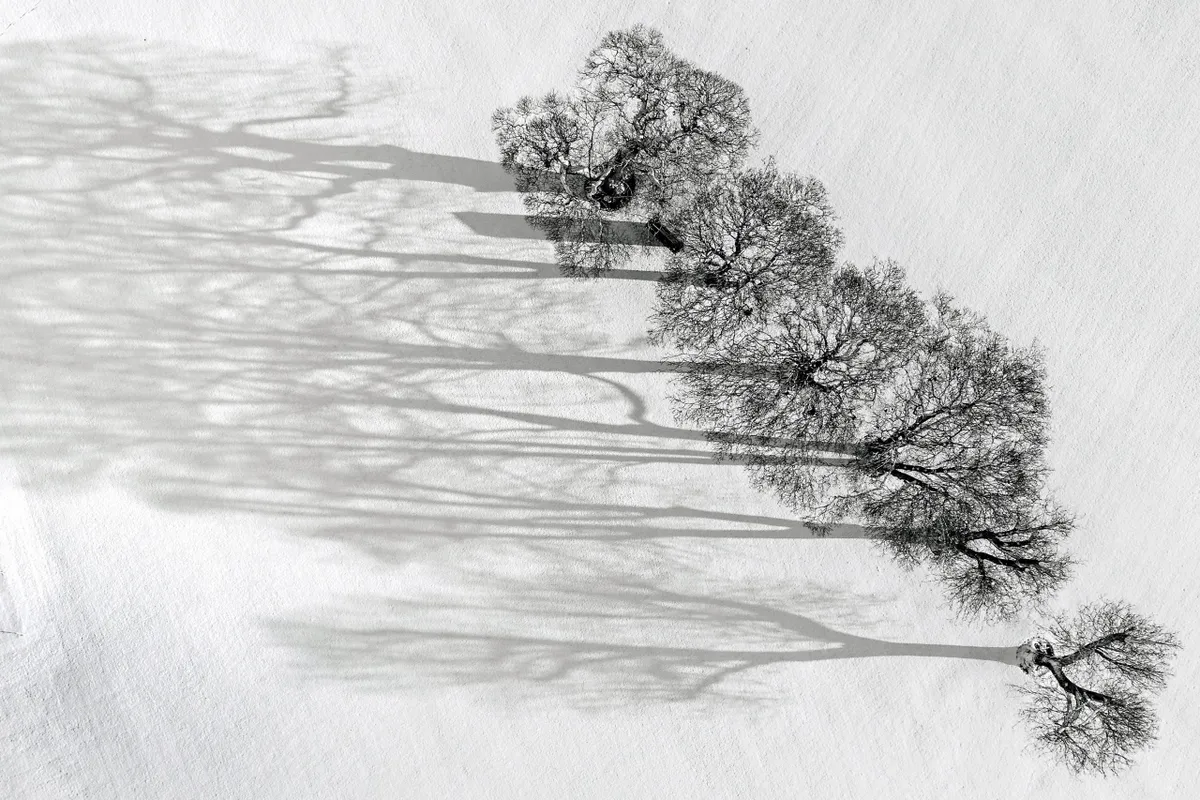
Skeletal fingers of shadow stretch out on to the snow-covered cricket fields of Gresham’s School in Holt, North Norfolk. This line of trees was shot from directly above, showing how drone photography can give us fascinating new perspectives on everyday scenes.
Writing in the ice
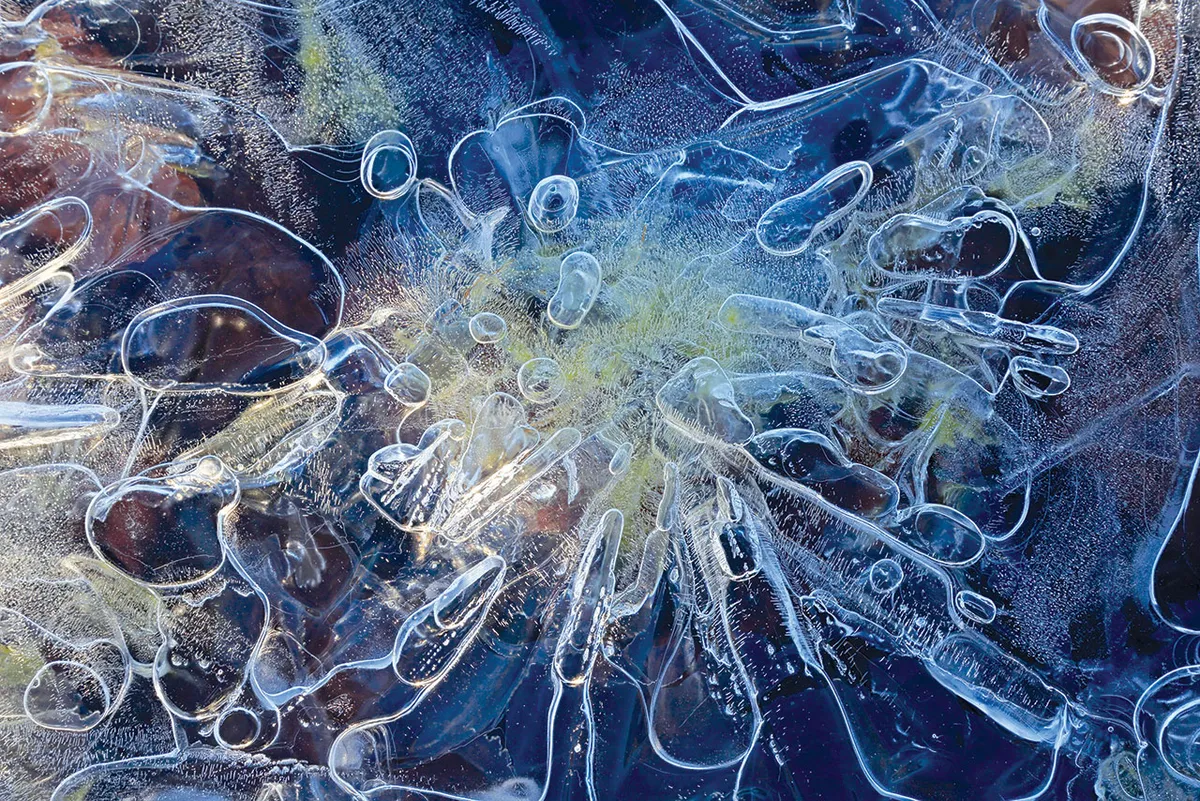
Sometimes you can find the beautiful in the mundane. The process of freeze, thaw, freeze can leave astonishing patterns and trapped air bubbles in pond ice, but we often overlook these mini wonders in search of grand vistas. Even puddles on a forest track or the ice on the edge of the familiar village pond can offer a glimpse of the sublime.
Nature’s gemstones
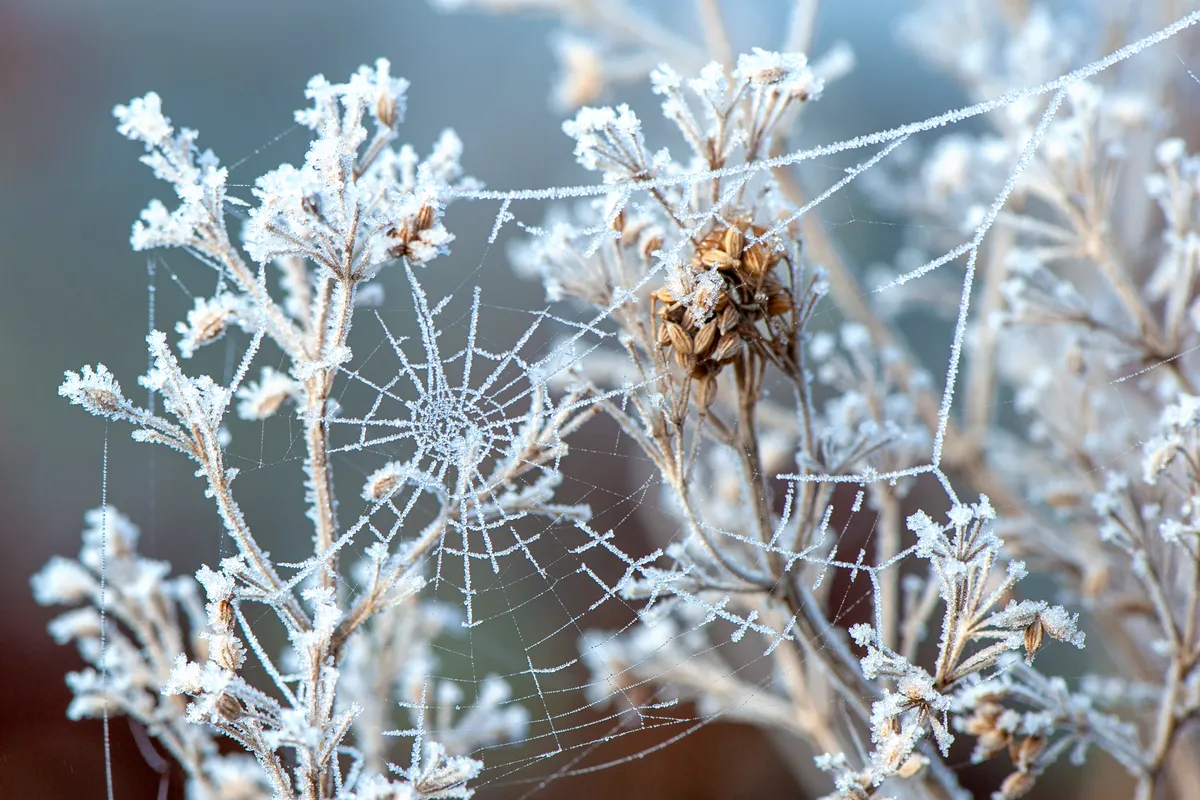
Dew forms on a late-autumn spider’s web then freezes in the early hours of the morning to create a diadem more precious than any bejewelled trinket in a royal museum.
Wind-whipped
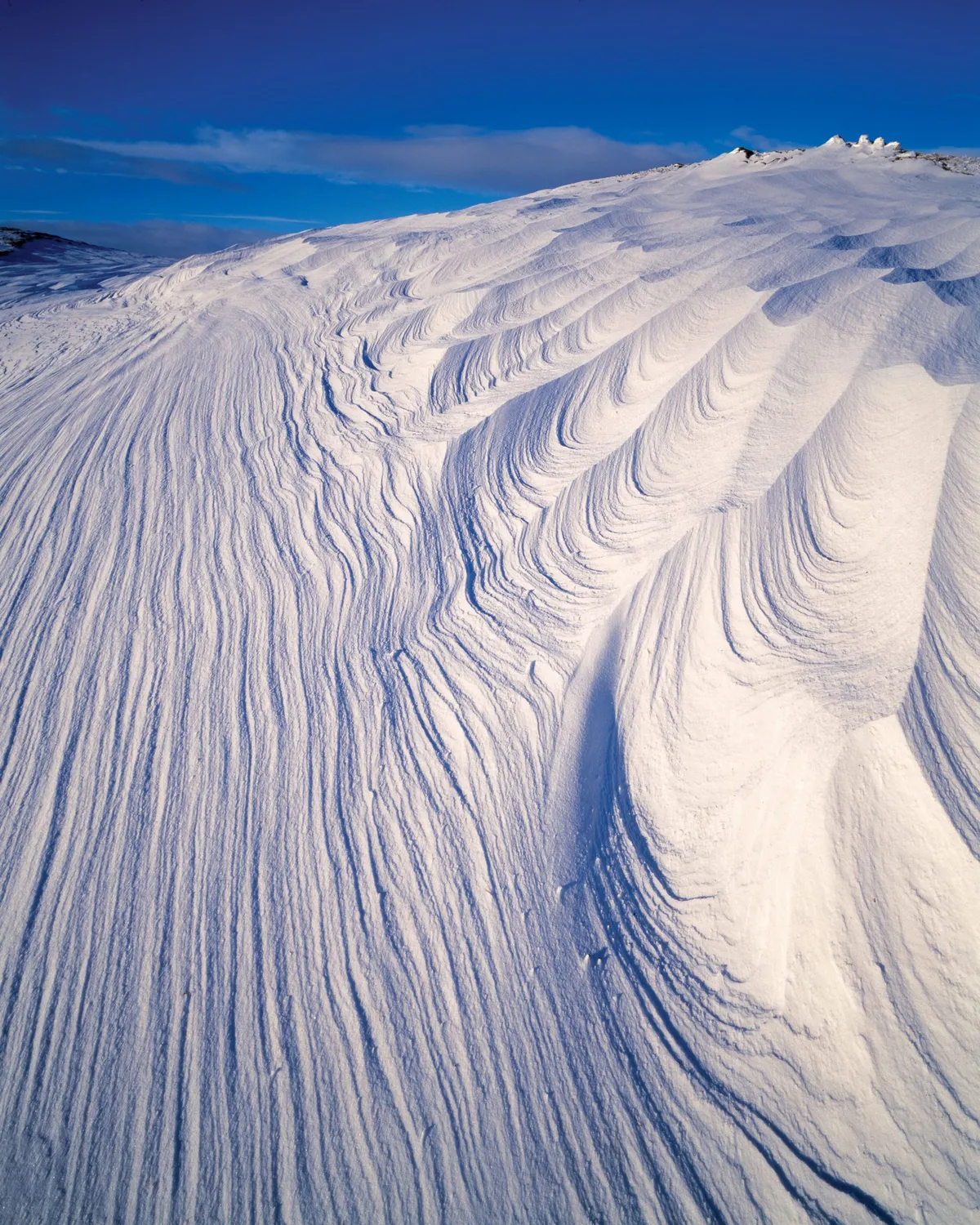
Wind works on snow to create soft lines on this modest hill in Argyle, resembling meringue oozing over a fabulous cake. This is Beinn Chaorach – ‘hill of the sheep’ in Gaelic. It looks beautiful and enticing but the accumulation of snow drifts hides gullies and ravines, making winter walking here after snowfall extremely challenging and risky.
Ice pancakes
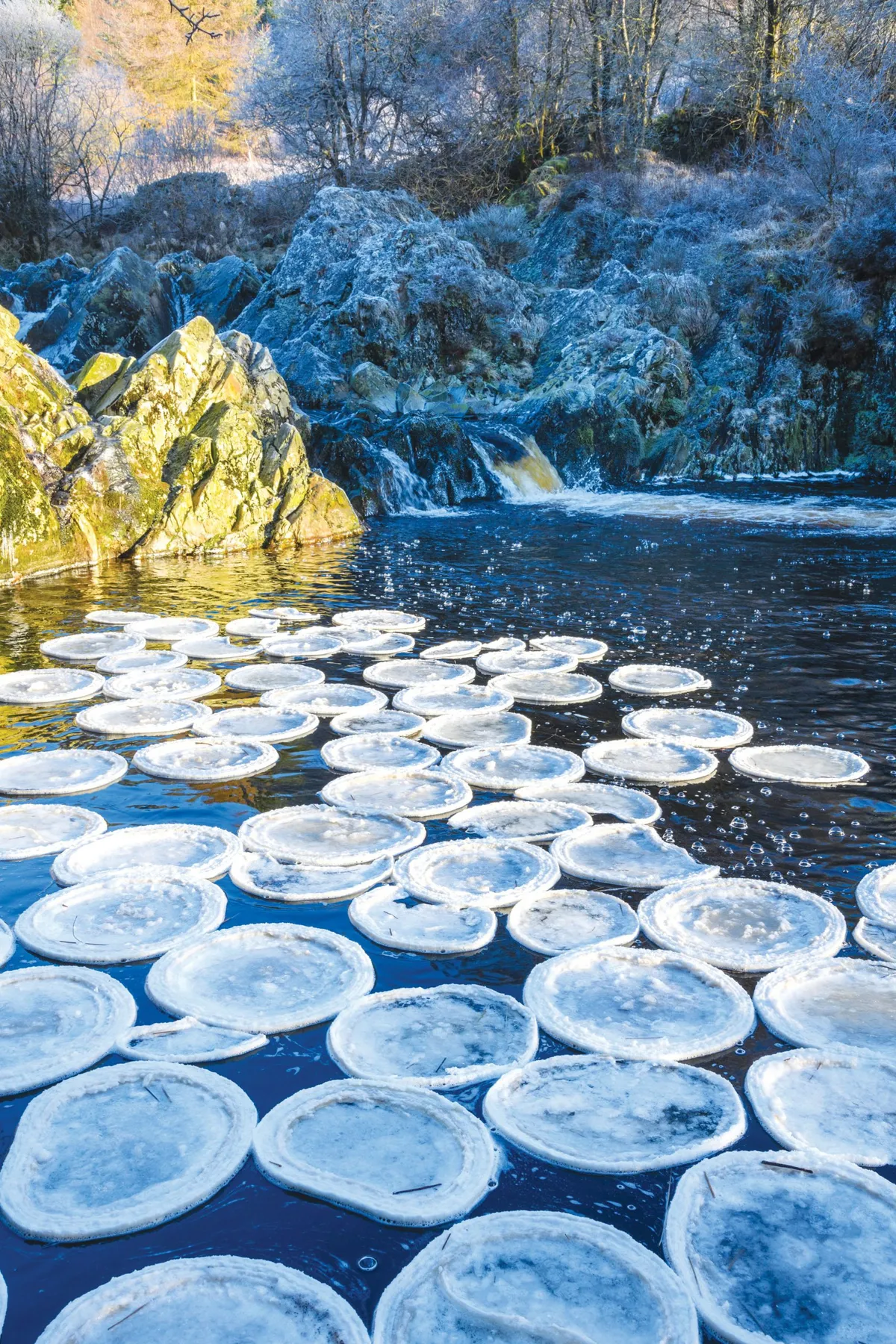
Pool of Ness Waterfall in Dumfries and Galloway experiences a very rare and mesmerising icy formation that usually only occurs in extremely cold conditions on the outer bends of rivers. Eddies create strong circular currents beneath waterfalls and rapids; the foam formed by the gushing water freezes and as the ice rotates it gathers more ice and forms a mini ice floe – each one rubbing gently against its neighbour to create a beautiful lily-pad-like frozen disc.
Cave of ice
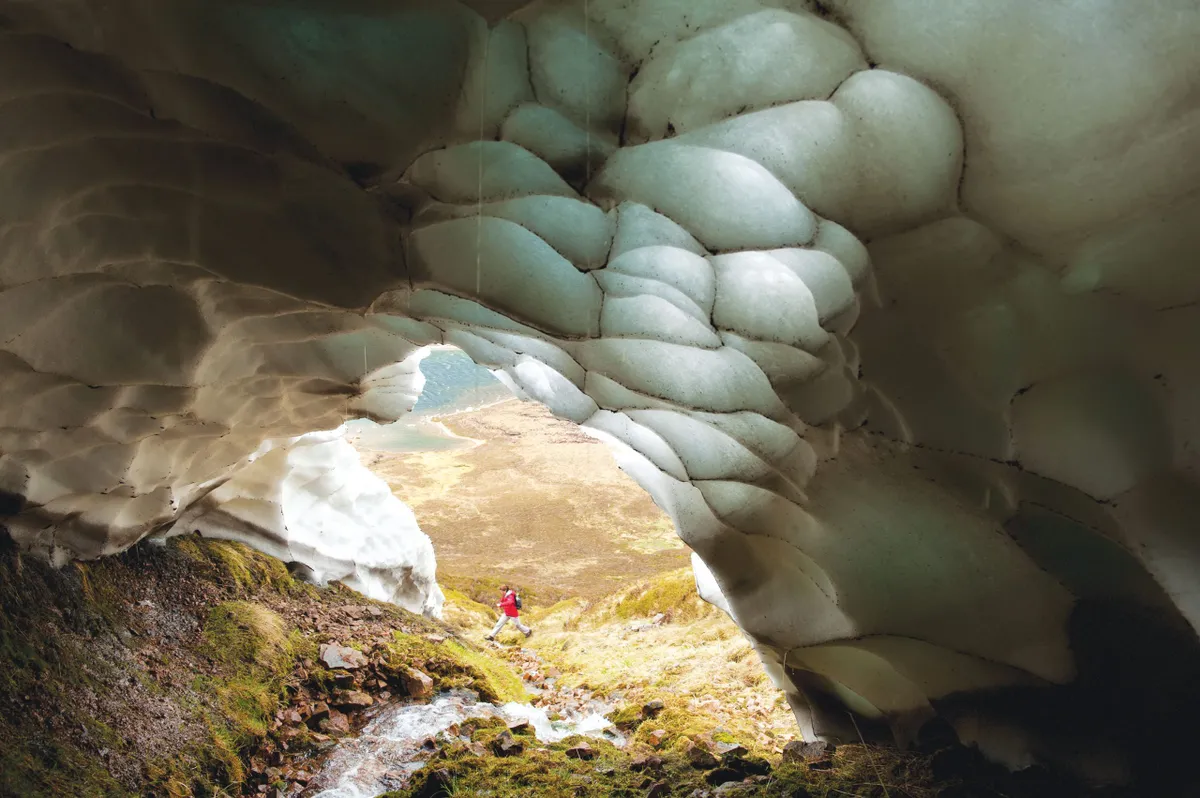
A walker leaps a stream issuing from an ice cave at Glen Einich, near Aviemore. In heavy winters, mini glaciers can form in gulleys and small glens as snow fills them, compacts and is then hollowed out by a stream along the bed of the gulley, creating a cave effect. It may be tempting but do not enter, as these caves can be very unstable.
Sycamore spikes
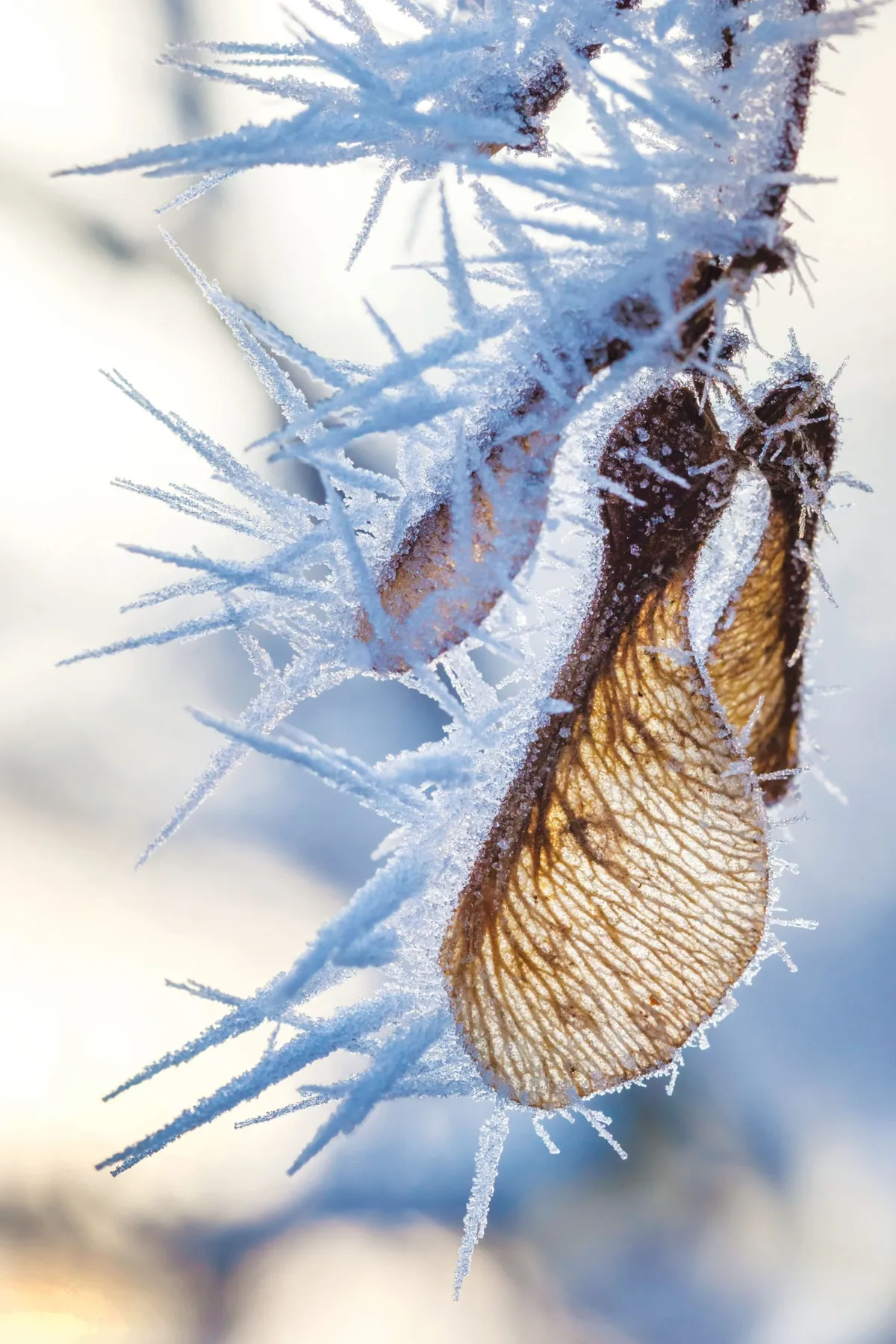
A sycamore seed coated in the spikes of a hoar frost. Hoar frost comprises ice crystals that form in the same process as dew – when very moist air condenses on colder below-freezing-temperature surfaces, such as twigs, leaves, blades of grass and fences. On clear, still winter days, vapour jumps to its solid, frozen state immediately and creates a glistening, crystalline spectacle along field edges and hedgerows.
Frozen in mid-air
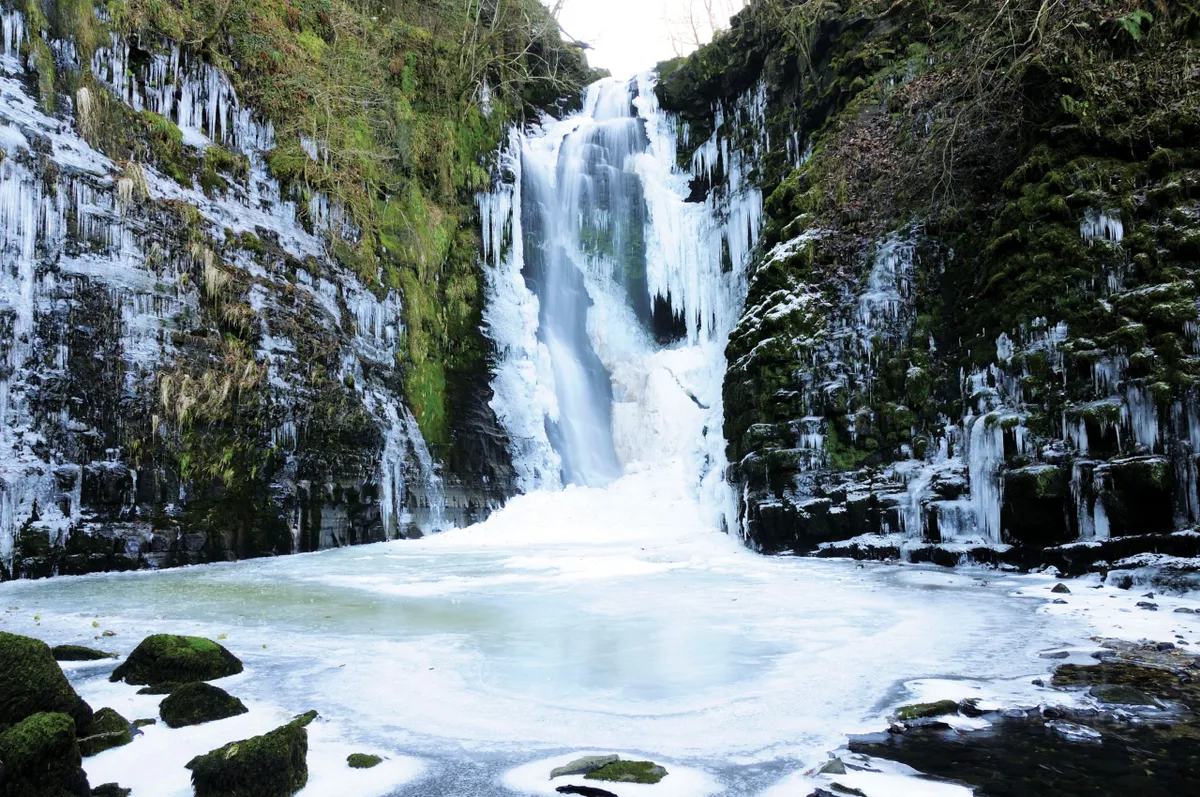
It takes exceptionally cold temperatures to stop a river flowing over a waterfall, but it happens, as demonstrated by Sgwd Einion Gam – ‘the fall of the crooked anvil’ – in the southern Brecon Beacons. Here in the narrow valleys of Neath, the once-industrial landscape of mills and mines is now known as Waterfall Country, with accessible walking routes to some of the most majestic falls in Britain. At 21 metres, Sgwd Einion Gam is the second highest waterfall in South Wales and the most remote.
Gilded beech
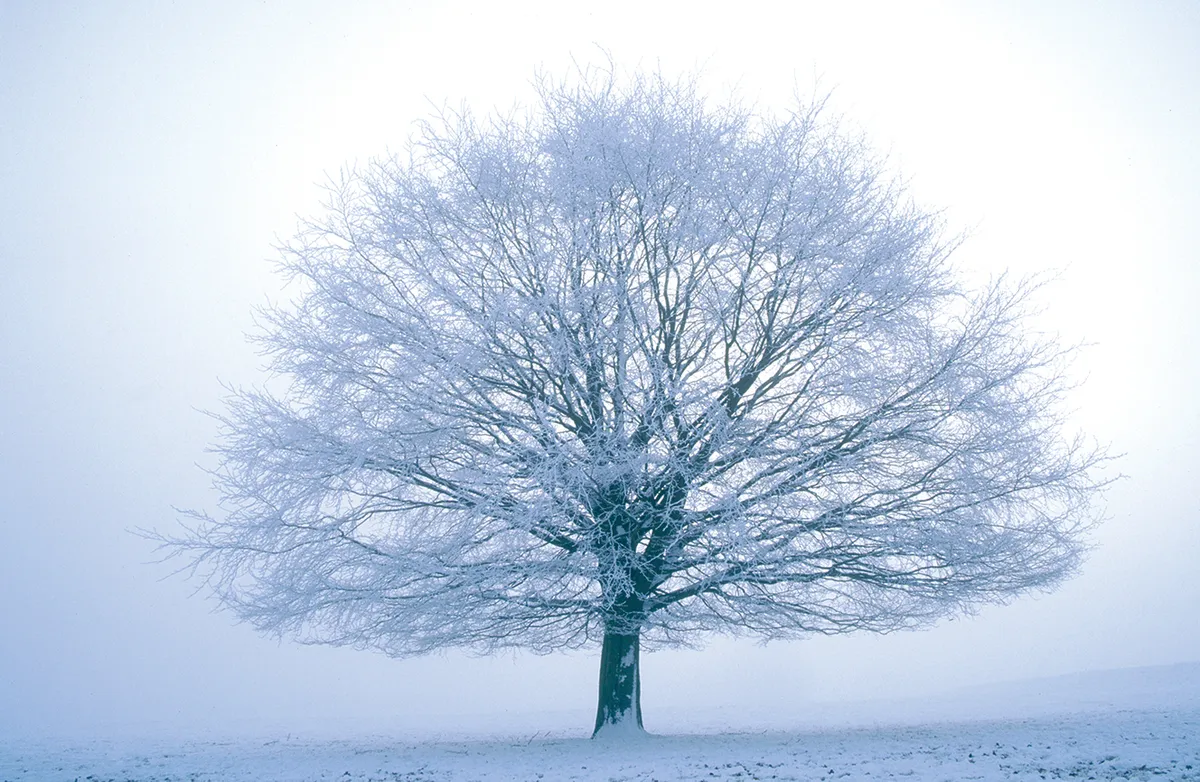
Hoar frost coats a beech tree in silver filigree. If you wake up to a hoar frost, you’ll be struck by the stillness. Only distant traffic and a few noisy rooks might break the peace. This is because hoar frost tends to form on windless nights; the moist air settles heavily on surfaces that are at below-freezing temperatures creating this glorious effect. Look
for hoar frost on trees, hedges and grass next to unfrozen streams and lakes, as they provide ample water vapour for the crystals to form.
Precious crystals
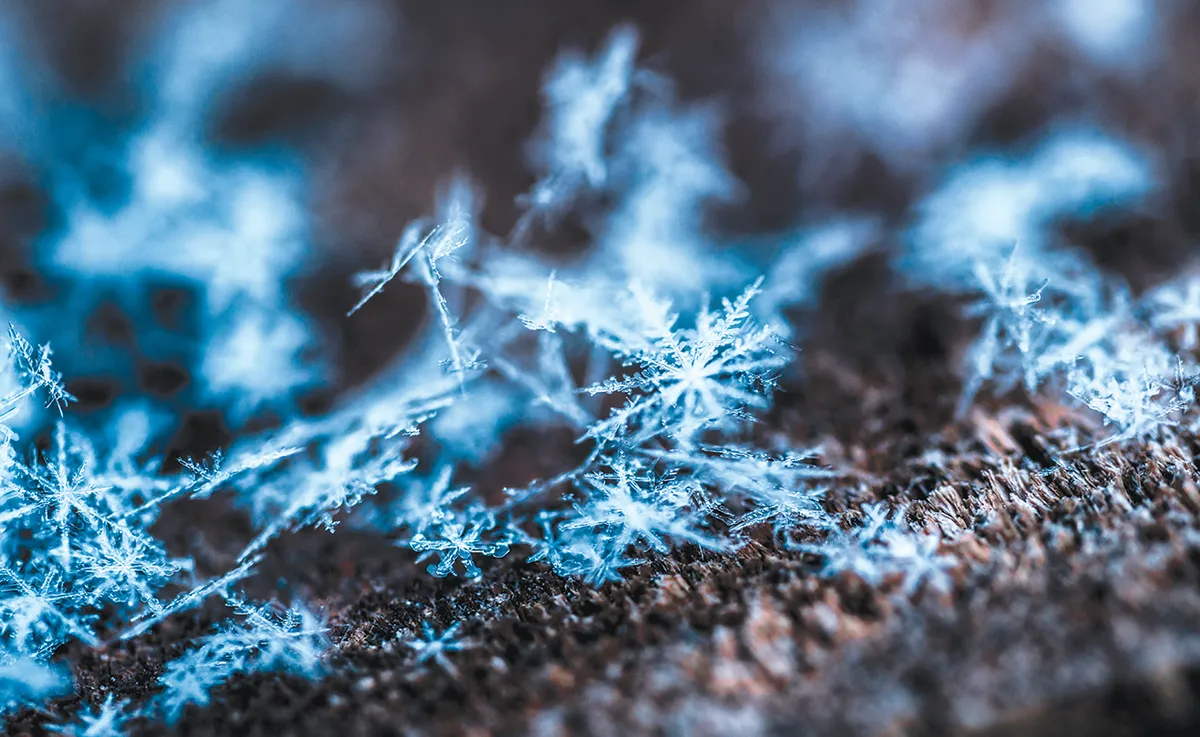
Frost crystals are like snowflakes – no two are the same. When the morning sun catches a heavy frost, it’s time to switch to the macro settings on your camera or phone and try to capture a rare sight of pure natural magic.